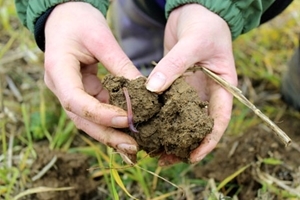 The GWCT has long argued for the importance of soil health – both on a farm level and as part of national policy. You might have seen a recent news story that reveals how just £284,000 – 0.41% of the environmental monitoring budget – is spent auditing the nation’s soil health. By comparison, £60.5 million – more than 200 times as much – is spent on monitoring water quality.
The GWCT has long argued for the importance of soil health – both on a farm level and as part of national policy. You might have seen a recent news story that reveals how just £284,000 – 0.41% of the environmental monitoring budget – is spent auditing the nation’s soil health. By comparison, £60.5 million – more than 200 times as much – is spent on monitoring water quality.
Further to this, we know from experience of farmland birds and other species that, while essential, monitoring alone is not enough. Soil scientists are clear that measures need to be taken if soils quality is to be improved. Without positive measures there is a danger we’ll simply preside over a measured decline in soil quality, recording it but not fixing it.
Soil health underpins all of our agricultural production. It is a vital asset that puts food on our tables. While the debate rages on and we continue to promote its importance, here are five things you might not know about soil:
- Healthy soil represents a very large store of carbon – the top 30cm alone is thought to contain more than twice as much carbon as there is in carbon dioxide in the atmosphere.
- In 2000, the Soil Survey and Land Research Centre estimated that around 2.2 million tonnes of arable topsoil are eroded by water each year in the UK.
- A study from 2015 calculated that erosion already affects around 17% of arable soils in England and Wales, with 40% at risk of erosion. It estimated that the costs of soil erosion, for example loss of crop yield, reduced carbon storage and drinking water quality, run to £1.2 billion per year in England and Wales alone.
- Organic matter, the part of the soil that is made up of dead or decaying plants or animals and dead or live microorganisms such as bacteria and fungi, is incredibly important. For every 1% increase in organic matter, the soil can hold over 200,000 more litres of water per hectare.
- Where soils are healthy, there can be a greater weight of earthworms living below ground than the livestock grazing above ground. In farming systems with moderate nitrogen fertiliser use, where there is a healthy earthworm population (more than 400 per square metre) yields are higher than in areas with few earthworms.